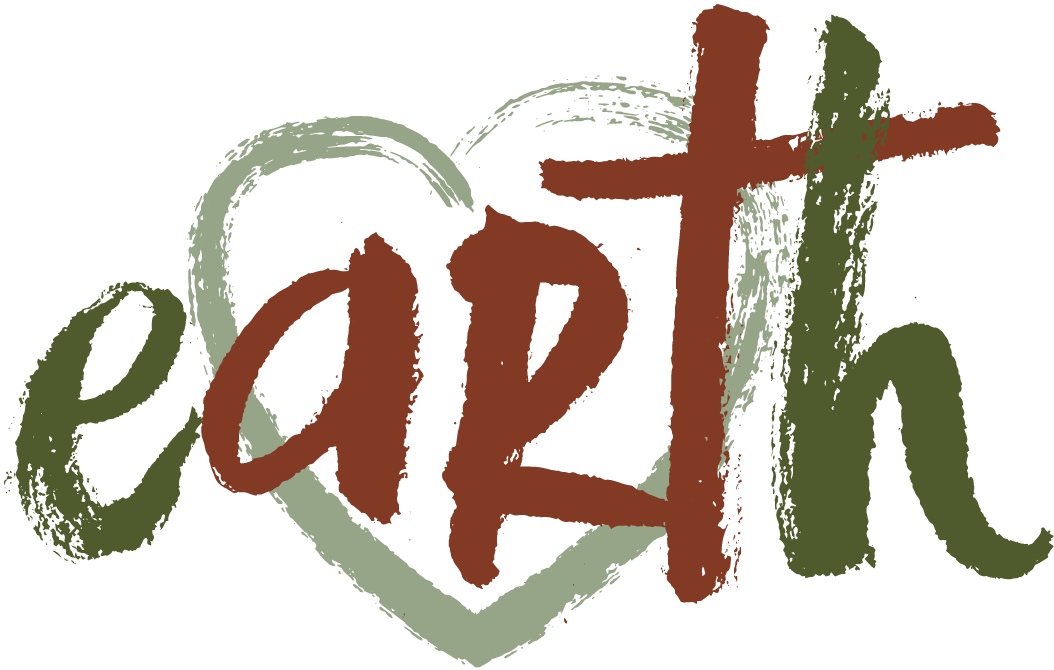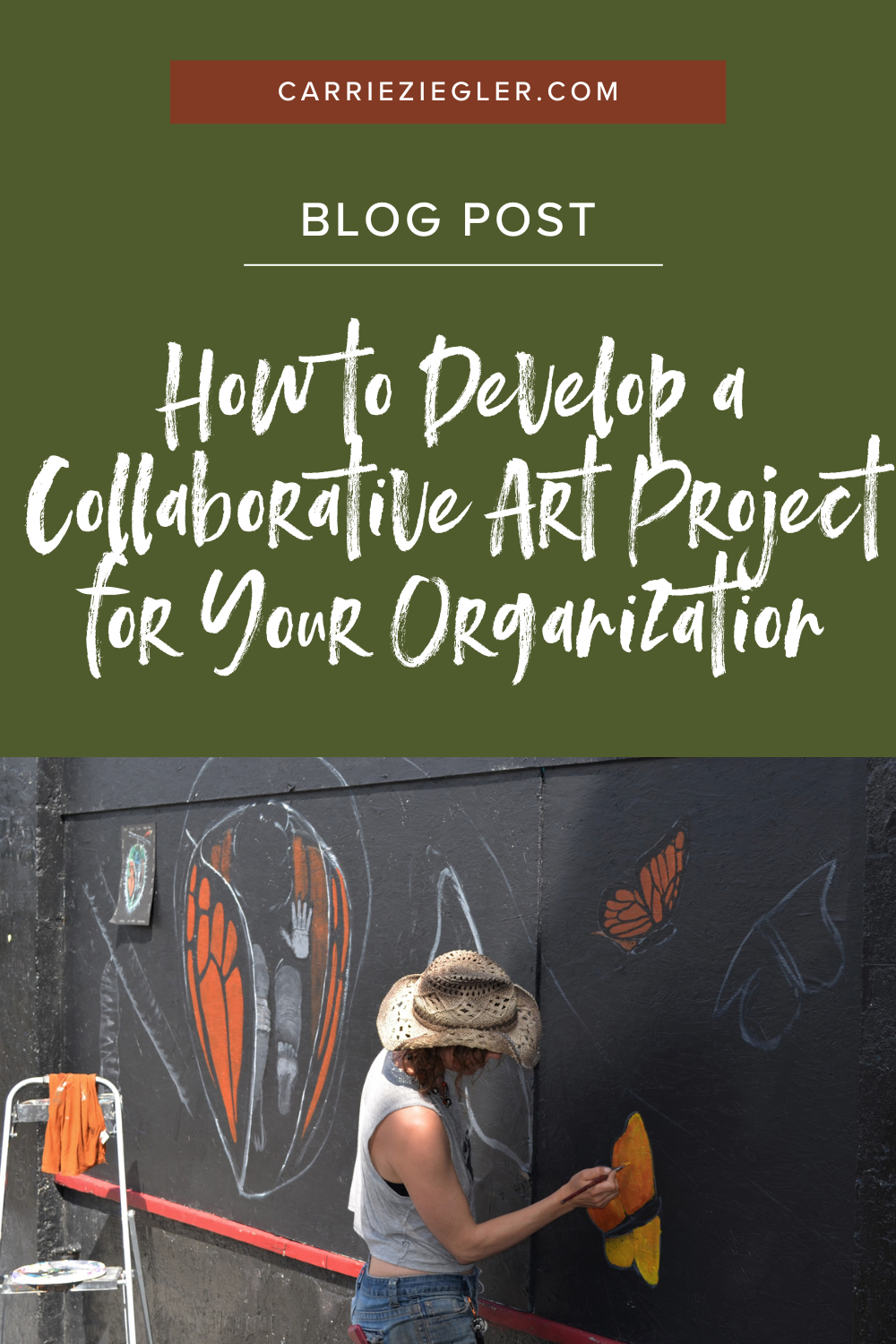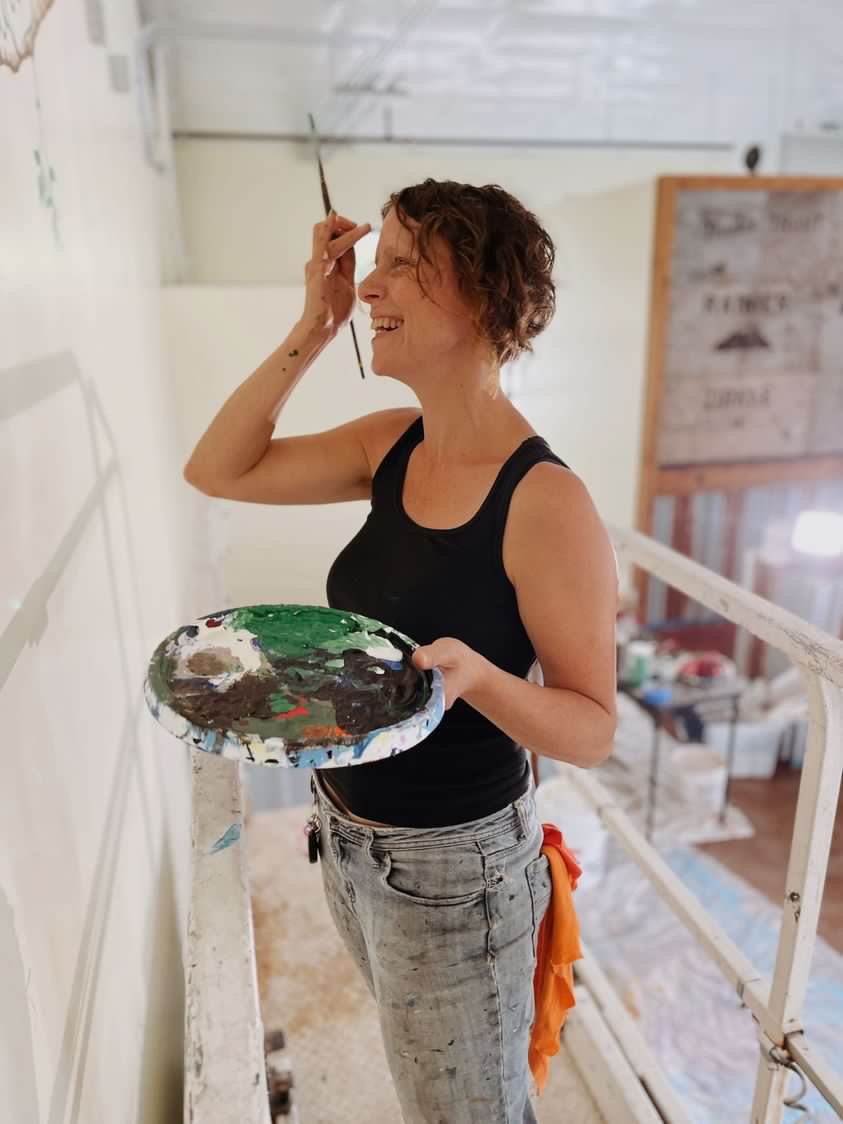101 Guide for Organizations: How to Develop a Collaborative Art Project for Your Organization
So, you want to use art to help your organization create positive change? You may be wondering how to develop a collaborative art project for your organization!
With the threat of the climate crisis looming, time is of the essence. We need to use all the tools at our disposal. Whether you are trying to change individual behaviors or change legislation, Collaborative Art can help you reach your goals.
We’ve been throwing facts at people for years, and it just isn’t getting through. It’s past time to change our tactics. What I’ve learned is that facts rarely change people’s behavior. Emotion does. Collaborative Art reaches people at an emotional level. It reaches them when they are part of its creation. It reaches them when viewing a finished installation or mural. It reaches them when they hear the stories of how, why, and by whom it was made. Collaborative art breaks down barriers and opens hearts, allowing people to see things in a way they never have before.
My collaborative art projects have resulted in incredible behavior and community-wide changes. These range from increasing an organization’s visibility by painting a high-profile collaborative mural to incorporating education and art from 100s and 1,000s of individuals into a project that actually changed laws in my community. They have resulted in commitments to use less single-use plastics and youth feeling like they have the power to change our government. Which, by the way, they do.
In this article, I’ll take you through three major aspects of developing a collaborative art project for your organization: Setting Project Parameters, Budgeting, and Choosing an Artist. These do not necessarily happen in that order and may happen simultaneously.
How to Develop a Collaborative Art Project for Your Organization
When beginning a new project, I suggest starting by asking a few questions.
What are the specific goals of your project?
What change are you trying to make?
What is your primary messaging?
Who is your target audience?
How many people do you want to involve in the project?
What resources do you have available?
What is your budget for this project?
Once you’ve answered these, you have a place to start and you’re ready to dive into project development.
Project Parameters AKA Creating the Box
Creative possibilities are endless, so we need to set some parameters. To make real change, it is helpful to focus on a specific issue. For instance, in The Chrysalis Project : Transforming Together, we were able to succeed because we were very focused on something that was already in the works in our community. The specific thing we wanted the collaborative art project to accomplish was for our local jurisdictions to adopt and implement the Thurston Climate Mitigation Plan.
From there, we looked at our available resources, what our communities needed at the time, what was possible, and what was not. This project took place at the beginning of the pandemic when most of us were in lock-down. Due to this, we had to get creative in our development. In-person gatherings were out. Zoom was in. Working together to paint a mural or have an art reception was out. Our need to process through the difficult emotions we were having was in.
Here are some more parameters I consider when developing a project:
• Will the art be permanent or temporary?
• Will the art be mobile or stationary?
• Will the art be two- or three-dimensional?
• Will we include our community in the design process?
Once you set some initial parameters, you’ll have a much clearer idea of your budget and what to look for in an artist.
Project Budget
Unfortunately, in our society, art is often an afterthought. And paying for an artist’s time is even farther from people’s minds. I am routinely asked to do projects for organizations, only to find out that they haven’t even considered paying for my time! What we value, and how we prioritize the things we pay for, is just one of the things that we need to shift to create a future where we ALL thrive.
Budgeting for collaborative art projects can be complex as creative possibilities really are endless. I’ve worked on projects that range between US $1,000 and US $50,000 and there really is no upper limit. It is up to you decide what financial resources you are willing and able to put forward to create the impact you want.
When considering your budget, some of the things you may need to budget for include:
Artist fees
1. Research, design, and development
2. Participant outreach
3. Coordinating and delivering workshops and events
4. Finalizing artMaterials and Supplies
Workshop space rental
Media outreach
Travel
A good artist can work within a budget and help you get the most out of your available resources. Some will offer an initial consultation for free to see if working together is a good fit.
For the Chrysalis Project, our budget did not allow for a permanent installation, and we couldn’t easily gather to create or share a physical art piece due to the pandemic, so we kept this project in the ether, so to speak. Visit my gallery to check out other collaborative art projects I have done.
How to Find and Choose an Artist
But how do you find a great artist? And what does that relationship look like? For many, the idea of contracting with an artist is new and they don’t know where to begin. If you happen to have a great artist in your organization, you are in luck. That is the best place to begin. But if you don’t, you can approach it in a couple of different ways.
Sometimes simply asking around and finding someone locally through your networks is the simplest way to go. The earlier you can begin working with the artist, the better, as they are likely to have a lot of great ideas and ways of working that are specific to them.
You can also approach finding an artist similar to how you would approach hiring any contractor, with a few twists.
In the art world, there are two main ways that public artists are hired. The Request for Qualifications (RFQ) and the Request for Proposals (RFP). An RFP requires an artist to develop a specific idea for a project, whereas an RFQ relies upon examples of an artist's previous work and typically include an artist's resume, selected references, and a statement of interest about the project. I suggest using an RFQ. RFPs take a lot more time for an artist to prepare and unless you offer payment for the proposals, you are essentially asking them to work for free. Besides, a truly collaborative project will include the impacted communities in the design process.
This is where you want to get clear on what you are asking the artist to do and what your organization will do. In addition to being an established artist, I have a background in environmental education, community engagement, and facilitation. I also have a lot of connections in my community. Therefore, I often take the lead on collaborative projects, doing everything from design and development, outreach and coordination of workshops, educational workshops, art workshops, and art finalization.
Sometimes organizations will take on some of those roles. For instance, your organization might want to put together the educational components or coordinate workshops. This can be helpful if you are the subject matter expert and have connections in your community that the artist does not. Taking on some of those aspects can also save your organization money.
Once you craft your RFQ, you can share it through local arts organizations, jobs boards, and environmental list-servs.
Choosing the right artist can still be tricky. You want someone who is knowledgeable about the subject matter, has excellent communication skills, and whose artwork resonates with you. You want someone who can see the big picture, inspire your audience to take action, and not drop the small details. Even more importantly, you want an artist who will listen to the people most impacted by the issue at hand and incorporate their thoughts and ideas into the project.
Organizations have partnered with artists in all the above ways and more. Personally, I like to work with the organization from the beginning of the project. That way I am part of the planning process and can help guide the organization through crafting a budget, setting parameters, and developing the project in a way that leads to real change.
Still not sure where to begin? I am available to consult on project development, budgeting, and how to work with artists as well as working directly with you to create a collaborative art project for your organization. I’m booking my calendar for 2025 and 2026 now.
If you want to use art to create change in your communities and are interested in working with me, let’s hop on a call to see how I might support your process.
Click HERE to get on my calendar for a free 30-minute consultation.






